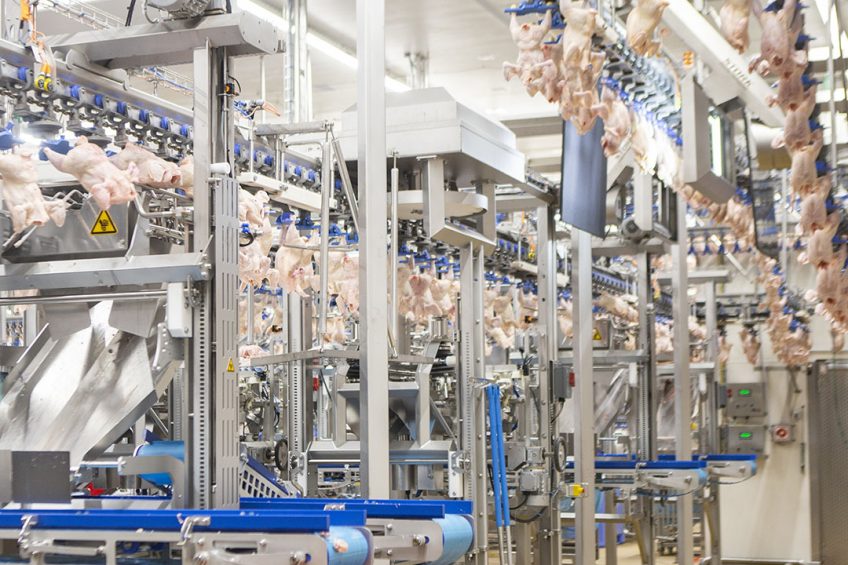Skilled labour is hard to come by

Given the global shortage of skilled labour it’s only logical to look for ways to intensify the automation level in a poultry processing plant. One striking example of such an automated process is Q-Wing. Marel Poultry has developed this chicken wing part grading and distribution solution in response to demand from the market for higher wing yields and less manual labour.
Stock markets may be on a roller coaster ride due to comments from an overrated twitter account and global trade is suffering from slammed on tariffs, but the real economy isn’t doing so bad. One indicator is the shortage of skilled labour. For example; the US labour shortage is approaching epidemic proportions and also in Europe good employees are hard to come by. That is the case in highly specialised jobs, but also in traditional blue collar positions. Poultry processing, among other sectors, has extra challenges. On the one hand the functions need a specialist skill set, on the other hand, not all positions in the processing plant are viewed by potential employees as quality positions. A cheap workforce from eastern Europe is becoming more reluctant to pick up western Europe’s shortages, at least not at minimum wages. In the US the Mexican workforce is in a similar position and faces travel and border issues as an added bonus.
On top of that, as employers face the pressure of not being able to fill all positions, the costs likely will go up. Rising labour costs will chew into corporate profits and in a world wide competitive market not all increases can be passed on to retailers and consumers. At the same time, poultry meat is in high demand. It was already the ‘meat of choice’ due to its quality, tastiness and price level. Demand is expected to grow even further as poultry meat will become the main substitute for pork meat, which is in short supply due to African swine fever outbreaks in many countries around the world.
Automation is key
If there is one industry that is already ahead of many other sectors when it comes labour efficient processes, it is the poultry industry. For years manufacturers have been pushing for innovations that reduce the need for people on the processing lines. Automation is the key here and it is already in place on the main processing lines. In cut up, not all facilities are on the same level of automation, but the pressure is there. Chicken wing parts for instance, are very popular as snacks and demand is skyrocketing. Try to imagine that on a single day in the US, on Super Bowl Sunday, 1.39 billion chicken wings are consumed. To provide such quantities to the market, processors need to have a focused wing cutting, batching and distribution process that produces both higher volumes and more consistent quality, with the least cost and hassle. It’s impossible to just hire workers for such a peak in demand.
One such automated system that is able to cope with wing demand is Marel Poultry’s Q-wing system. It is integrated in to the ACM-NT cut-up system and it comprises of a selection of wing cutting modules, an IRIS visual grading system, sophisticated logistics and Innova controlling software. In general, poultry processors see wing part sorting as a very labour-intensive process. Particularly in markets with high potential for wing products such as the US, the adequate assessment and distribution of wing parts will add enormous value. Automating many manual operations and increasing wing yields, reduces labour force dependency and cost on the one hand and increase profits due to better yield.

Eye for the product
For a machine to take over the work of a person it needs to ‘see’ and ‘know’ what it is doing. For that a IRIS camera system is visually assessing the quality of the wings on the line. This IRIS visual grading system is always objective and consistent, as it doesn’t get influenced by quality issues of previous batches and doesn’t get tired at the end of the day. It’s input tells the Q-Wing system exactly which parts of each left or right wing and which are A and B graded. If, for example, only the left first joint is damaged, the left second joint can still be processed as an A grade item and so can all right wing parts. This will dramatically help secure consistent quality and raise wing profits. Following grading, the sophisticated logistic system comprises of multiple conveyor belts, leading to separate packing stations for the different ‘A’ grade and ‘B’ grade drummettes, wingettes and whole wings. Left and right wing parts can be kept separated or can be mixed. Such an accurate sorting procedure reduces considerably the amount of products to be trimmed and produces minimal giveaway.












